Can diabetics eat pumpkin?
cucurbit sugar addicts hypoglycemic
有 diabetes hypoglycemia

Where did the "pumpkin hypoglycemic" claim come from?
Chinese medicine, pumpkin is a dual-use vegetables, warm and sweet, especially for the liver has a health effect, and liver and blood sugar regulation is also closely related, so to a certain extent, also for the "pumpkin hypoglycemic" said laid the foundation. Years of research found that pumpkin is rich in polysaccharides, carotenoids, pectin, mannitol, etc., has an important role in health care, the trace element cobalt is in the first of all vegetables, modern medicine has also proved that cobalt is the growth of pancreatic islet cells essential nutrients, and therefore blood glucose regulation is helpful, this discovery is also for the "pumpkin hypoglycemic This discovery also provides sufficient basis for the "pumpkin hypoglycemic" point of view.
What should sugar lovers do with pumpkin?
The above "meals do not leave the pumpkin, the pumpkin as a drug to eat" approach, in fact, is very blind and extreme, we have to understand an important principle is: any food is to raise blood sugar food, there is no blood sugar in the world of food, because any food in our body under the action of digestion and absorption will eventually be converted into blood sugar! It's just that different varieties of food have different magnitudes of blood sugar elevation.

In other words: the real hypoglycemic food (i.e., after eating, blood sugar does not rise but lower food) does not exist, usually what we call "hypoglycemic food" such as pumpkin, bitter gourd, konjac and so on, after eating the blood sugar will rise, just compared to other foods to raise blood sugar amplitude is a little lower, if you eat a lot of it, it will only be If you eat a lot of it, it will only be counterproductive. Moreover, pumpkin is a class of starch-rich foods, on the sugar content, certainly not as good as those leafy vegetables and melons and eggplants, even if pumpkin has therapeutic benefits, but not to go to the extreme, that the more you eat, the better, it should be used as an auxiliary means to help regulate blood sugar, scientific and objective view of it.
So how should sugar lovers eat pumpkin?
The key lies in the amount of consumption of more and less, pumpkin also contains energy and carbohydrates, different varieties and maturity of its sugar content in 4% -15% ranging from its glycemic load (GL) per 100 grams of value between 2 to 11, while 100 grams of rice made of white rice, its glycemic load of up to 80, for ease of comprehension, it can also be said that, 100 grams of pumpkin on the glycemic For the sake of understanding, it can be said that 100 grams of pumpkin has an effect on blood sugar equivalent to about 13 grams of white rice made from rice. In the consumption of pumpkin at the same time as long as the deduction of part of the staple food, do not have to worry about elevated blood glucose, but instead from the pumpkin to obtain a wealth of beneficial components, is not a viable program for sugar lovers.
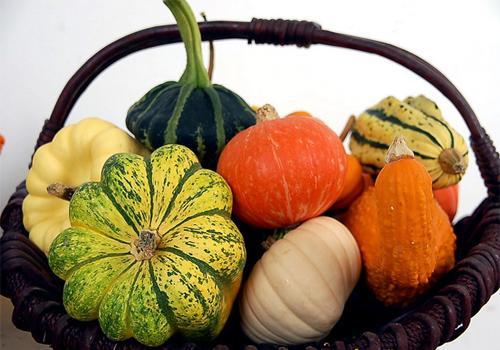
Sugar lovers eat pumpkin - choose the right
Old pumpkin and young pumpkin starch content is not the same, take 100 grams of pumpkin, for example, raw pumpkin containing carbohydrates for 1.5-5.6 grams, the old pumpkin carbohydrate content is as high as 10-15 grams, from the amount of starch contained in the comparison, the old pumpkin to be higher than the young pumpkin to be much higher, but from the nutrients to be compared to the old pumpkin nutritional components such as dietary fiber
Pumpkin for Sugar Lovers - Doing it Right and Eating Right
Here to remind the sugar lovers, eat pumpkin must even skin with seeds, pumpkin skin and seeds is definitely a sugar lover's big treasure, skin in the rich dietary fiber and pumpkin seeds rich in linoleic acid on sugar lovers play a positive role in controlling sugar. But some people feel that the pumpkin seed skin and seeds are too hard to swallow that how to do? I have long considered this, the recommended recipes in the back of the solution.
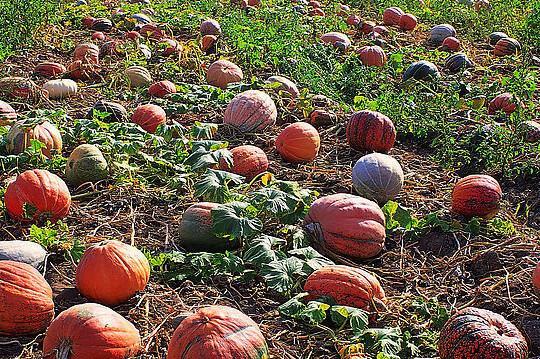
Can I eat commercially available pumpkin products?
In the market we will see a variety of pumpkin products, such as pumpkin powder, pumpkin cake, pumpkin drinks, etc., these foods in the process, in order to increase the taste and delay the shelf life, often after the purification (loss of dietary fiber), additives, the efficacy of the former is not as good as it should be, sugar lovers should avoid such food. Sugar lovers must learn to make their own food, safe and secure Here are two to the delicious practice of pumpkin.
There is no bad food, only irrational diet, the same theory applies: there is no best food, only the best diet, so the sugar friend should avoid blindly follow, partiality, do not exaggerate the efficacy of a single food, ignoring the overall dietary structure, may the sugar friend scientific diet, blood glucose stable.
.......
This article was originally published!
Thanks for the question invitation!
Diet type and structure is extremely important for diabetic patients to effectively control blood sugar, pumpkin is a common food on the table in China, about its relationship with diabetes, there are different opinions, each with their own reasons, the following Elf doctor to analyze and answer this question.

Before understanding this question it is important to first understand pumpkin in general. From the biological point of view pumpkin belongs to the cucurbit family, and flower melon, watermelon, etc. is considered a family. Pumpkin is rich in nutrients, including iron, potassium, with, manganese, riboflavin, vitamin A, vitamin C, etc., but also pumpkin contains a lot of carbohydrates, its absorption has the effect of raising blood sugar. At present, the international use of glycemic index (GI) to measure the impact of food on blood sugar, 100 is equivalent to eating pure sugar, 0 is equivalent to and plain water, generally believe that food higher than 70 has a higher blood sugar elevation effect, pumpkin GI is 75, so this is also an indirect response to the pumpkin carbohydrate content is still very high. However, GI is not the only indicator, another indicator is called glycemic load (GL), its value is lower than 10 is considered to have little effect on blood glucose, pumpkin's GL is 3, so from this point of view, pumpkin's effect on blood glucose is again limited. Scientists later found through research, although pumpkin contains a lot of carbohydrates, it also contains a large amount of dietary fiber, which can effectively limit the rate of absorption of sugar in the pumpkin, thus to a certain extent to offset the role of carbohydrates within the pumpkin to raise blood sugar.
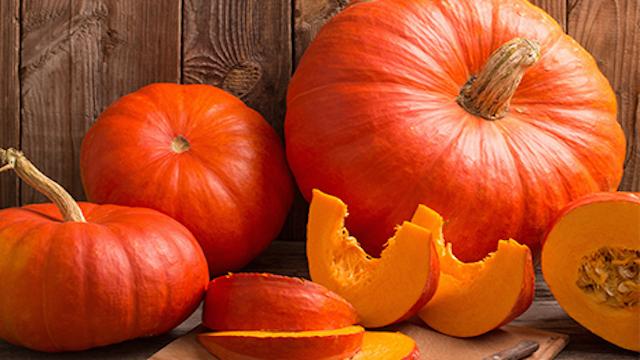
So is pumpkin good for lowering sugar? Dr. Elf gives you a list of a few studies. In 2009, scientists found that pumpkin contains substances called carnosine and nicotinic acid, which can ease insulin resistance and slow down the progression of diabetes. 2007 study suggests that pumpkin contains a large number of polyphenols and antioxidants, which can play an auxiliary role in lowering glucose. 2005 an animal study showed that pumpkin contains a kind of polysaccharides that can be bound to proteins, which can play a role in lowering glucose and increase glucose tolerance. can have a hypoglycemic effect and increase glucose tolerance.
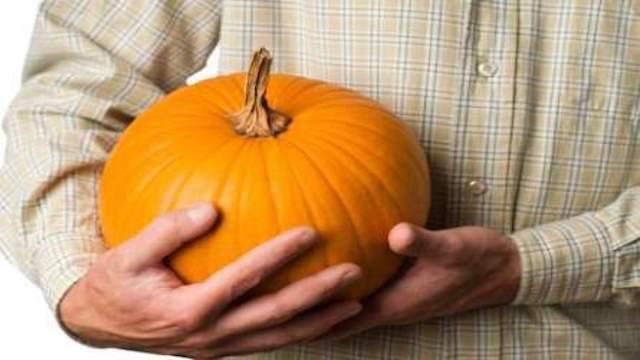
Through the above introduction we can see, from the overall pumpkin is beneficial to diabetic patients, can play a certain effect of lowering sugar. Although so elf doctor thinks diabetic patients can eat pumpkin, but does not mean that you can take pumpkin as a hypoglycemic drug to eat, after all, its hypoglycemic effect is limited, in addition to pumpkin does contain a lot of carbohydrates, even if its absorption is slow, the impact of blood sugar is not very violent, but if too much eating will increase the body's overall conformity to the lowering of sugar is also unfavorable, so as long as it is generally eaten on the good.
Thanks for the invite.
That pumpkin can cure diabetes that is a little unreliable, pumpkin is a vegetable not medicine, and diabetes is a lifelong incurable disease. Can only say that eating pumpkin is to help assist in stabilizing blood sugar, but also should be appropriate to eat pumpkin, excessive eating pumpkin is not good for blood sugar, and even aggravate the symptoms of hyperglycemia.

Pumpkin is a very familiar vegetable, pumpkin nutritious, sweet taste, which is rich in starch, sugar, a variety of minerals and trace elements, but also rich in unique carotene, rich in vitamins A, B, C and minerals, essential 8 amino acids and children's essential histidine, soluble fiber, lutein and phosphorus, potassium, calcium, magnesium, zinc, silicon and other trace elements. Pumpkin and diabetes in the end what is the correlation between it, research has found that a pumpkin extract substances for the smooth blood sugar has a great help, therefore, "pumpkin can treat diabetes and high blood sugar" said instantly spread, but in fact, "eating pumpkin" is not But in fact, "eating pumpkin" is not able to treat high blood sugar and diabetes, only one of its substances can play a role, therefore, many patients eat a lot of pumpkin, but the result is to lead to the aggravation of the condition deterioration, play the opposite effect.
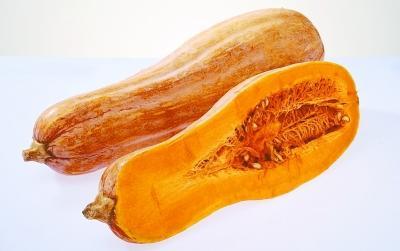
Pumpkin glycemic index is actually higher, glycemic index (GI) for high blood sugar and diabetic friends is a very important concept, which refers to the rate of food per unit of time to raise blood sugar, and pumpkin glycemic index is 75, belonging to the higher glycemic index of the food, if a large amount of food is obviously on the blood sugar is a great impact, therefore, high blood sugar, diabetic friends are not suitable to eat too much pumpkin! The However, the glycemic load (GL) of pumpkin is not high, which means that the factors that raise blood sugar in this food are not too many, so as long as it is eaten in moderation, blood sugar will not soar. Pumpkin is also rich in pectin, cobalt, and dietary fiber, all of which contribute to stabilizing blood glucose, so eating pumpkin in moderation actually helps to stabilize blood glucose, and 50 to 80g at a time is a good portion for diabetic and hyperglycemic friends.
Blood sugar is a double-edged sword that, for our body, can be good and bad. In general, if the blood sugar is significantly lower than normal, our body will not be able to function properly, and this time it will manifest itself in dizziness, and even cold sweats, fainting and other consequences. Of course, it's not good if it's high, and that's what diabetes is today, something that many people often can't do anything about. Once high, people have to go to the diet, such as this also can not eat, that also can not eat. So, for life, some healthy grains and cereals, if eaten, on the disease in the end is good, or bad? For example, nature gifts to people pumpkin.

1. What are the ingredients of pumpkin
Some people say that pumpkin is different from other melons, it has a sweet flavor, especially when it comes to maturity, the pumpkin will be made into a dish, or soup, it will be obvious that the pumpkin has a sweet smell, so it means that it has sugar, so patients are not allowed to eat. In fact, such a statement is not wrong, but also can not go to the absolute approval. What are the ingredients of pumpkin? Generally speaking, in addition to the well-known fiber, vitamins, there is a small amount of sugar, as well as trace elements, so even with diabetes, for pumpkin is not completely avoided.
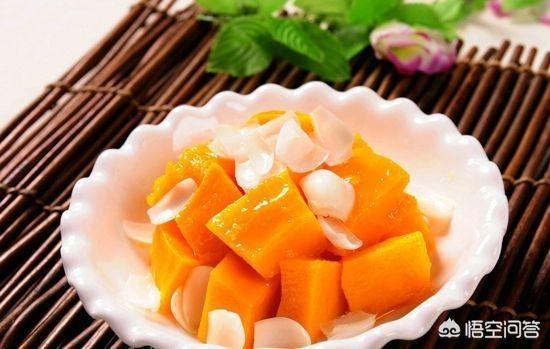
2. How to eat pumpkin
If you already have high blood sugar, you should pay attention to what you eat, but pumpkin is by no means untouchable. First of all, pumpkin with other low-sugar food, put together, can ensure that the patient in each time to eat, both a certain amount of sugar intake, but not too much, so that the "just right", for the patient's disease happens to be good. Secondly, eating pumpkin does not necessarily have to eat the most mature, tender a little bit of good taste, sugar is also less, for the patient's disease, may be more helpful. Finally, you can make the pumpkin into soup, so that the nutrients are also absorbed, the flavor is also good, digestion is also more economical, so the benefits can be said to be a one-two punch.
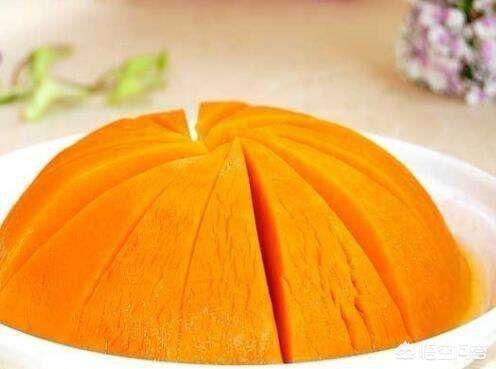
3. Pumpkin does not aggravate
Some people are afraid that eating pumpkin will be bad for their condition or even aggravate their condition because of its sweetness, but in fact there is no truth in this. Usually, any food absorbed into the body will be converted, that is, from fat to sugar, or from sugar to other substances. Therefore, eating is the first step, it is inevitable to go to increase nutrition, so each time should be appropriate, do not eat too much, so that the body will be good for the disease will also have the effect of improving.
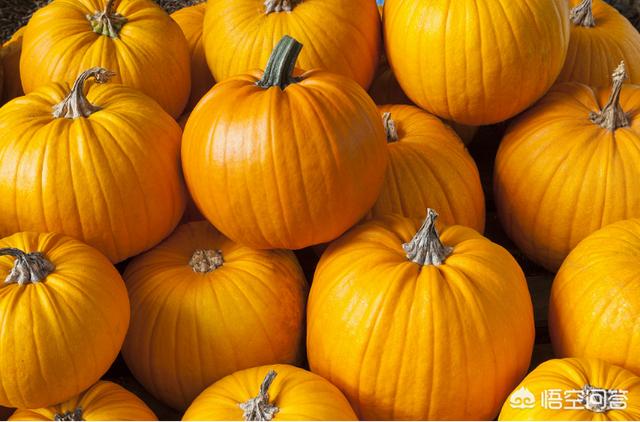
A lot of people talk about: eating pumpkin can lower blood sugar claims, and some also said "have a nose", so that many people believe it!
But Wei Wei had to say: NanHow can squash lower blood sugar when it is a high starch vegetable?
As a vegetable, pumpkin is very nutritious:
The large amount of vitamin A and carotene is a veritable eye candy;
Large amounts of potassium, magnesium, zinc and chromium play a huge role in cardiovascular protection, boosting immunity, promoting growth and development, and maintaining immune function;
In addition, pumpkin is rich in dietary fiber is conducive to reducing intestinal cholesterol absorption, assist in lowering blood lipids, laxative!
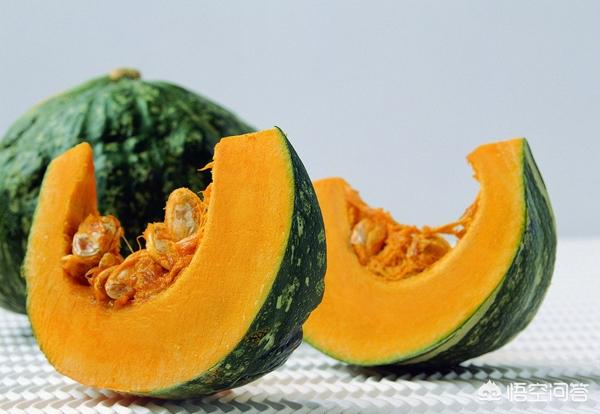
The reason why the pumpkin will be legendary as "sugar reducer", because the pumpkin inside not only more starch, but also contains a polysaccharide - pumpkin polysaccharides, with Ganoderma lucidum polysaccharides, mushroom polysaccharides, a variety of polysaccharides have some special health benefits, the pumpkin is not only the starch, but also contains a polysaccharide - pumpkin polysaccharides.Pumpkin polysaccharides have been shown to increase insulin sensitivity in mice.The first thing you need to do is to eat the pumpkin! That said, many of you may be starting to cheer and think that eating pumpkin is a way to lower sugar.But this experiment did not yield the same results in humansAll in all, there are still huge differences between us and the mice, so improving insulin sensitivity and lowering blood sugar by eating pumpkin is just "wishful thinking" for now!
而Pumpkin has a glycemic index of 75, which is among the top vegetables, so it is better for sugar lovers to consume it in moderation, and never take it as a treasure!
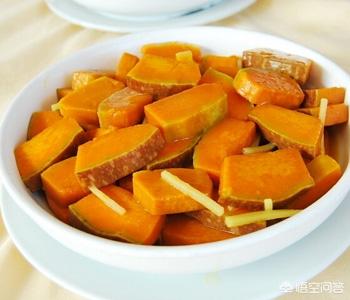
There are ways to eat pumpkin
Like potatoes, pumpkin is one of those vegetables that can be used as both a meal and a dish, and different varieties of pumpkin are suitable for eating in different ways:
Old pumpkin because of less water, dietary fiber so the taste is drier, rougher, more suitable for steaming, but Wei Wei reminds:Steamed pumpkin should always be part of the main mealBecause older pumpkins are higher in calories and sugar content, if eaten as a vegetable not only will the meal be overloaded with energy, but it will also threaten postprandial blood sugar!
In addition.Adding pumpkin as a sugar substitute to rice, buns, and hair cakes isVery good choice, because the starch content of pumpkin in vegetables is "big cow", while in the grain can only be considered "little brother", replace part of the grain not only reduces the calories of the staple food, but also increase the nutrient density and sweetness of the staple food!
but willTenderer textured, crunchier pumpkinYou can eat it stewed or sauteed, but if you eat too much reduce the amount of staple food you consume at that meal!
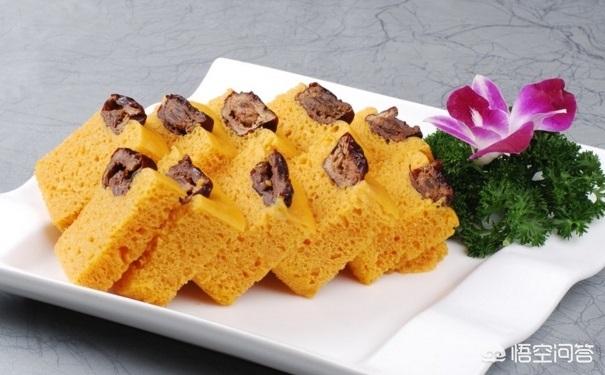
Tell me about the rest of the pumpkin.
Pumpkins are full of treasures, not only are the flesh tasty, but the seeds, vines and flowers are good too!
Pumpkin seeds are rich in phospholipids, unsaturated fatty acids, vitamin E, magnesium, calcium, potassium, selenium and other nutrients, on lowering blood lipids, smooth blood sugar, protect blood vessels, moisturize the skin, etc. have a good effect, but in view of the high calorie content, every day as a nut to consume a small handful can be!
The pumpkin vine and flowers have the effect of clearing heat and detoxifying the body, which is also widely spread in our folklore!
Life needs nourishment, and so does life!
Nutritional life with Wei Wei, welcome to Nutritional Wei Wei Tao!
Diabetics can eat pumpkin in moderation, but they should not expect to eat pumpkin to lower sugar.
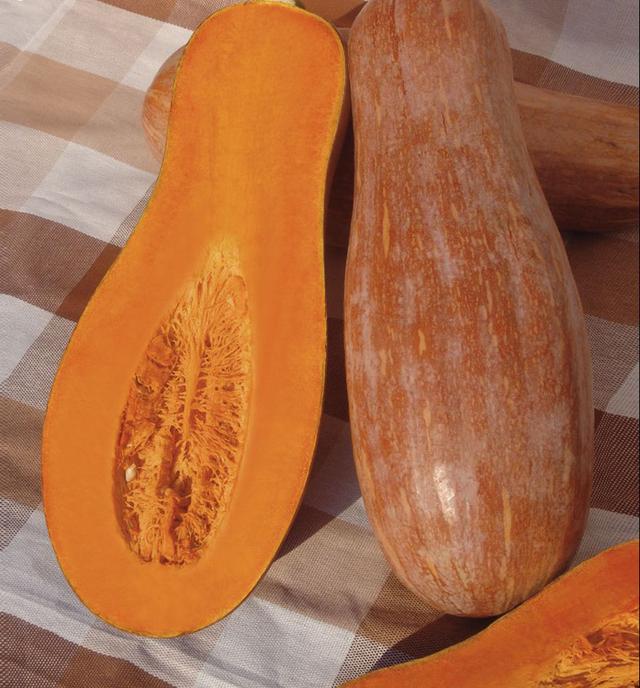
Pumpkin, also known as bonnet, pumpkin, Chinese pumpkin. It belongs to the Cucurbitaceae family.
The overall nutritional value of pumpkin is moderate among vegetables, and it is rich in beta-carotene, with a content of 890 μg/100 g. Beta-carotene can be converted into vitamin A in the body, and vitamin A plays an important role in the body's visual function, maintaining the integrity of the skin's mucous membranes, and maintaining and promoting immune function.
Pumpkin contains 148 micrograms of vitamin A per 100 grams, accounting for 19% and 21% of the recommended daily intake (800 micrograms/100 grams and 700 micrograms/100 grams, respectively) for the average adult male and female. In addition, the potassium content of pumpkin is also relatively high, for 150-340 mg/100 g. Whether diabetics can eat pumpkin depends on its GI first.
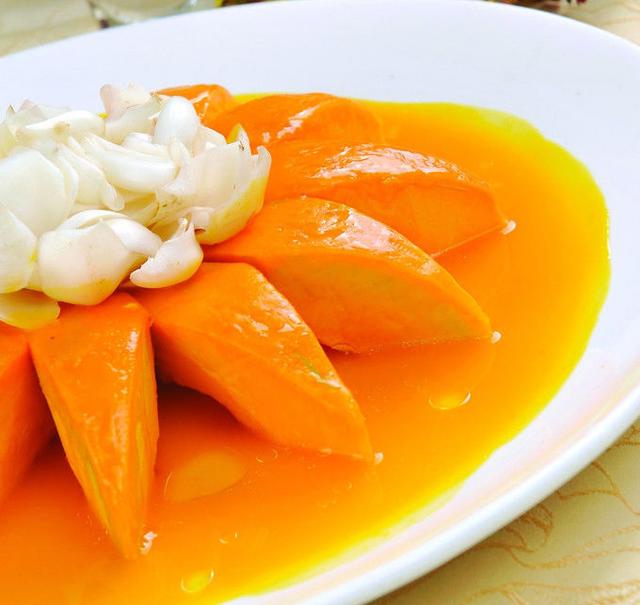
GI, or "glycemic index", which is a useful indicator of the postprandial glycemic response induced by a food. Generally speaking, a GI of less than 55 is considered a low GI food, 55-70 is a medium GI food, and greater than 70 is a high GI food. In other words, the lower the GI, the less impact a food has on blood sugar fluctuations.
Pumpkin has a GI of 75 and is classified as ahigh glycemic index (HGI)of food, the theory is that eating pumpkin tends to cause big swings in blood sugar levels.
However.Although pumpkin is high GI, it's not completely off limits for diabetics. Because it also depends onGlycemic load。
The dietary glycemic load (GL) is the product of the GI of the food and the available carbohydrates, which combines the quality and quantity of the carbohydrates consumed and allows a more complete estimation of the total glycemic effect of the diet.
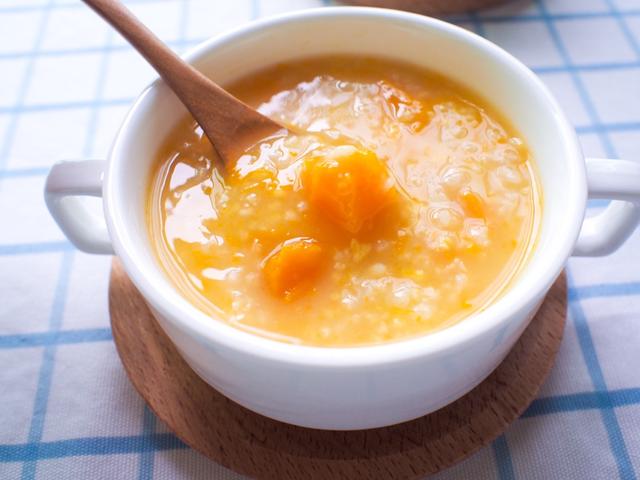
It is known that pumpkin has a carbohydrate content of 15 g/100 g and a GI of 75, so the glycemic load of the food from eating a 100 g piece of pumpkin would be GL = 75 x 15 ÷ 100 ≈ 11. If one were to eat 100 g (half a bowl) of rice, the GL would be 21, which is almost twice as much as that of the pumpkin.
In other words.Although pumpkin has a high GI, because it is eaten in small quantities and has a low GL, it generally does not cause large changes in blood sugar。
Some people may ask, isn't it said that eating pumpkin lowers blood sugar? Indeed, in some animal experiments, pumpkin polysaccharide contained in pumpkin is found to have the function of lowering blood sugar, however, it has not been confirmed in humans. Moreover, pumpkin contains more starch, as well as sucrose, fructose and other soluble sugars, they are not conducive to lowering blood sugar.
Therefore, diabetics can eat pumpkin appropriately, but need to reduce the amount of some of the main food at the same time, and can not take pumpkin as a glucose-lowering drug to eat. In addition, it is recommended that diabetics give preference to the kind of tender pumpkin that is more crunchy to eat.
By Liu Pingping, Dietitian & Science writer.
Pumpkin, warm, sweet, belongs to the cucurbit family pumpkin annual herbaceous trailing plants, drought-resistant, native to Mexico to Central America, and our country planting pumpkin has been about 430 years of history. Pumpkin is not only nutritious, but also has therapeutic health effects and medicinal value.
Recently, the Internet rumor "more consumption of pumpkin can lower blood sugar", so eat pumpkin is really good for diabetes?
Answer Sneak Peek:
Relevant human clinical experiments have proved that pumpkin has no obvious role in lowering blood sugar and cannot replace the means of drug treatment.Pumpkin belongs to the high glycemic index food, sugar lovers in the consumption of pumpkin should pay attention to with diet, excessive consumption will be counterproductive.
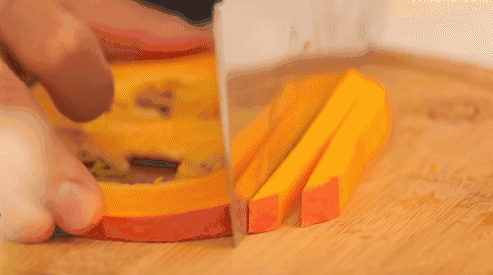
[Internet rumors that pumpkin can lower blood sugar cause]
Reason 1: Hokkaido, Japan, there is a "bare nuts pumpkin", on the prevention and treatment of diabetes has a certain effect.
Refute the rumor:"Naked kernel pumpkin", also known as shell-less pumpkin, its seed kernel without seed coat, can be very good to reduce processing costs and improve economic efficiency. ButSo far there is not enough scientific evidence to prove that naked kernel pumpkin has a therapeutic effect on diabetes mellitusTherefore, the claim is purely a rumor. Therefore, the claim is purely a rumor.
Reason 2: pumpkin contains pumpkin polysaccharides, pumpkin polysaccharides can regulate the activity of pancreatic islets, improve insulin secretion, thus reducing the blood sugar value in the body.
Refute the rumor:Scientists Liu Congjun [1] and others separated and extracted pumpkin polysaccharides from pumpkin and applied them to hyperglycemic model mice, and the results showed that the mice's blood glucose rapidly returned to normal levels. However, the results showed that the blood glucose of mice rapidly returned to normal.Experiments on pumpkin polysaccharides have not achieved authoritative medical proof in humans, and the metabolic mechanisms of mice and humans are different, so the conclusions obtained in mice may not be the same as those in humans.。
According to the results of relevant clinical anthropological experiments [2], it has been shown thatSmall amounts of pumpkin have little effect on blood sugar. Researchers at Ruijin Hospital of Shanghai Jiaotong University found that consumption of pumpkin did not lead to a reduction in blood sugar thatInappropriate consumption runs the risk of making your blood sugar rise further.
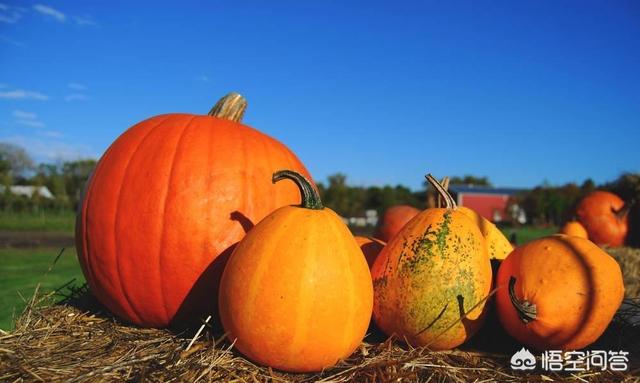
Why do you think there is a risk that pumpkin consumption will raise your blood sugar?
After food is digested and absorbed by the body, the glucose produced from the conversion of starch in it rapidly enters the bloodstream, causing blood glucose to rise. A measure of how much of a glycemic response is elicited by the human body after consuming a certain food [3] is commonly expressed as the Glycemic Index (GI).
Pumpkin has a GI of 75[3]High Glycemic Index (HGI) foodsThe food is digested and absorbed quickly after consumption, and glucose is released quickly, resulting in a high rise in blood glucose, so improper consumption of the food may risk a further rise in blood glucose.
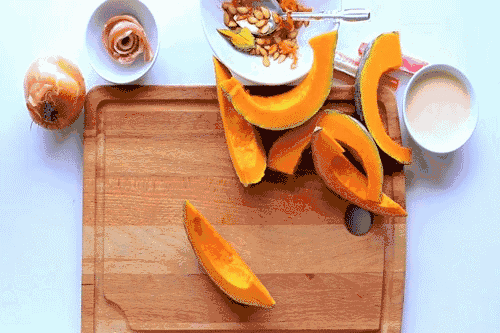
[And can diabetics eat pumpkin?]
Can!
Compared with other vegetables, pumpkin is rich in sugar and starch (about 5.3 g per 100 g), low in protein and fat (less than 1 g per 100 g), and contains a variety of vitamins (vitamin A, vitamin B1, vitamin C, etc.) and trace elements (potassium, calcium, magnesium, etc.) [4]. At the same time, pumpkin has a high content of pectin, which has the effect of detoxification and protection of gastric mucosa. Every 500 grams of pumpkin produces 100 kcal, which is about 35 grams of calories produced by staple food.
Pumpkin has a high GI value, and sugar lovers should eat pumpkin with foods with lower GI values such as coarse grains and mixed grains. At the same time, the intake of pumpkin should be included in the daily dietary calories, and the intake of some staple foods should be reduced accordingly.Under the premise of controlling the total calories unchanged, try to ensure that the intake of cereals, meat, eggs, milk, vegetables and fruits are complete in order to obtain balanced nutrition.
Chao suggests:
When selecting a pumpkin you should chooseTender pumpkinBecause older pumpkins are moreLess total sugar. Meanwhile, in the cooking method sugar lovers try to still use theseafood seasoned with salt and sake then steamedAvoid cooking methods such as stir-frying or deep-frying that bring in unnecessary fat intake.
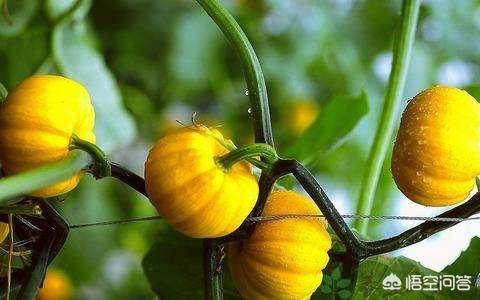
[Summary]
Relevant human clinical experiments have proved that pumpkin has no obvious role in lowering blood sugar and cannot replace the means of drug treatment。
For sugar lovers, in the active drug treatment at the same time, you can cooperate with the scientific diet to regulate, due to the pumpkin nutrients are more complete, and has a certain therapeutic effect, moderate consumption of pumpkin is still favorable.

Follow the "super brother talk about food", to learn more fresh nutritional tips!
bibliography
[1] ZHANG Congjun, YAO Huiyuan, GONG Yansheng, TAN Xinguang. Separation and extraction of pumpkin polysaccharide and its hypoglycemic effect[J]. Food Science and Technology,2001(05):15-16+18.
[2] LI Guizhi, SUN Qiuying, PENG Qingjun. Clinical observation on hypoglycemia of pumpkin[J]. China Modern Drug Application,2007(05):11-12.
[3] YANG Yuexin, CUI Hongmei, WANG Yan, XIANG Shixue, ZHOU Shuying, YU Lianta. Glycemic index of common cereals and potatoes[J]. New Observations on Nutrition and Health,2005(01):14-20.
[4] FAN Wenxiu,LI Xinzhen. Nutrient analysis and functional properties of pumpkin[J]. Guangdong Trace Element Science,2005(02):38-41.
Author: Chen Haolin Zhao Lichao

Because I heard that eating pumpkin can lower blood sugar, some diabetic patients will pumpkin as the best sugar food and eat. But recently, "Molecular Endocrinology" magazine released the latest research results of a medical institution in Shanghai, but shows that "pumpkin sugar theory" is misleading, eat more pumpkin not only does not lower sugar, but also lead to increased blood sugar, fluctuations in the condition.
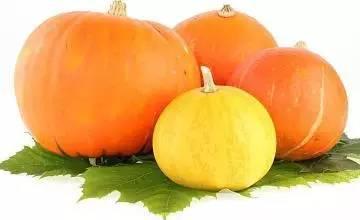
So, how do we look at the pumpkin sugar or sugar this problem, how to look at the scientific health effects of pumpkin? Our reporter interviewed the "Diabetes World" magazine editorial board, Peking Union Medical College Hospital Clinical Nutrition Department Yu Kang, deputy chief physician.
● Pumpkin has a variety of health benefits
Pumpkin, also known as pumpkin, belongs to the cucurbitaceae plant fruit, mostly produced in summer and fall, since ancient times, has been the attention of the people and praise: one is in its unique flavor, and the other is in its health benefits.
Yu Kang said that China's traditional medicine has long since discovered the pumpkin has a high medicinal value, its health effects in China's three traditional medical books are described. Chinese medicine history book "Diannan Materia Medica" recorded, "pumpkin temperature, taste sweet and tasteless, into the spleen, stomach two meridians, can moisten the lungs and qi, phlegm and pus, expel worms and detoxification, treatment of coughs, asthma, carbuncle, constipation, etc."; "Compendium of Materia Medica" said that the pumpkin "tonic in the beneficial qi"; "Compendium of Commonly Used Folk Herbs" recorded that pumpkin "tonic in the beneficial qi"; the Compendium of Commonly Used Folk Herbs" describes pumpkin "can reduce swelling, detoxification, phlegm, breast milk, treatment of jaundice and dysentery", "to eliminate fatigue, enhance physical fitness". These accounts and assertions are mostly from simple observation and practice, at that time there was a lack of sufficient evidence to confirm, but these accounts themselves, it is enough to show that the ancients on the health effects of pumpkin importance.
After analyzing pumpkin using modern nutritional techniques, it is found that pumpkin is rich in nutrients, such as a variety of vitamins (especially carotene), macronutrients (such as calcium and phosphorus) and trace elements (such as iron and zinc, etc.). To trace elements of zinc, for example, per 1,000 grams of pumpkin containing 18 mg of zinc, teenagers often eat pumpkin, can effectively prevent and control the lack of zinc caused by developmental delays and anorexia and other diseases. In all kinds of vegetables and grains, pumpkin in the content of the trace element cobalt in the first place, often eat pumpkin can be prevented due to lack of cobalt caused by hypertension, cardiovascular and cerebrovascular diseases. Some studies have also shown that pumpkin in the prevention and treatment of prostate hypertrophy, atherosclerosis, promote gastric mucosal ulcer healing and other aspects also have a certain effect.
● Pumpkin lowers sugar relative to other foods
The claim that eating pumpkin cures diabetes probably originated in the early 1980s. It is said that as many as 5% of the people in the Hokkaido region of Japan suffer from diabetes, but there is a small village called Yubari in Hokkaido that does not have a single diabetic. Some medical professionals believe that this is related to the local residents often eat pumpkin, eating pumpkin to lower blood sugar claims have also since. But recently some new medical research has found that eating more pumpkin not only does not lower sugar, and sometimes even lead to increased blood sugar.

How to look at the relationship between eating pumpkin and blood sugar? According to Yu Kang, this issue should be analyzed dialectically. As a food containing sugar and energy, the overall effect of pumpkin on blood glucose is to raise rather than lower; however, compared with other carbohydrate-containing foods, its ability to raise blood glucose is weaker, and the change in blood glucose is smoother and more soothing after consuming pumpkin.
Talking about the reasons, Yu Kang analyzed that, on the one hand, the carbohydrate content of pumpkin is relatively small, 100 grams of pumpkin contains only 4.5 grams of carbohydrates; on the other hand, pumpkin contains a large amount of pectin, which is a kind of soluble fiber, and starchy food mix, will delay gastric emptying, so that carbohydrate absorption is slowed down, so as to delay the peak of postprandial blood glucose. Therefore, it is perfectly fine for diabetics to eat some pumpkin (no more than 200 grams per day). Especially for some diabetic nephropathy patients who are undergoing low-protein diet therapy, pumpkin can replace part of the staple food (rice, pasta, etc.) due to the very small amount of protein it contains, thus achieving the effect of reducing the total amount of protein.
Yu Kang reminded that pumpkin is, after all, sugary food, while its health benefits can not replace the formal hypoglycemic drugs. For diabetic patients, unlimited large quantities of eating pumpkin is not appropriate, not to think that eating pumpkin can cure the disease and take the initiative to stop using regular hypoglycemic drugs.
Eat pumpkin with every meal
Ms. Zhang thought that pumpkin is good for diabetics, so she went to the market and bought a lot of pumpkin back, ready to eat more pumpkin. Every morning Ms. Zhang steamed a pot of pumpkin, and then every meal will eat some, especially dinner eat more, so eat a whole week, even her old partner are tired of eating, but Ms. Zhang is still quite obsessed with this food, every meal will have pumpkin.
Can eating pumpkin really lower your sugar?
Ms. Zhang ate so much pumpkin to see how her blood sugar value? At the beginning of eating pumpkin, her preprandial blood glucose is generally around 6 mmol / l, normal medication, and then in the usual diet based on all the pumpkin, and such postprandial blood glucose value is generally around 8 mmol / l, especially after dinner blood glucose value, often more than this value, at the beginning of the teacher thought that the doctor said that some medications need to be observed for a period of time to have an effect, and to eat pumpkin is estimated to need to wait for a period of time, but continuously eat for a week, did not see the expected results, and the old lady found that the past two days Zhang's face is very pale, and very good. A period of time, but ate continuously for a week, the pressure did not see the expected effect, and the old partner found Zhang's face yellow, very worried about her old eating pumpkin to eat any problems, so advised her to eat less. Is pumpkin in the pumpkin polysaccharide does not work on their own, this day Zhang teacher full of suspicion to find me.
A Scientific Look at Pumpkin Foods
The first time I saw Ms. Zhang, I asked her if she ate a lot of carrots or pumpkins. Ms. Zhang was surprised and said, "How do you know? I've been eating pumpkin every day lately, but my blood sugar hasn't improved much, so I'd like to ask a dietitian for help!" It is true that some studies have shown that pumpkin contains some active ingredients that have been observed to have hypoglycemic effect on diabetic mice in animal experiments, but this is not the result of human experiments, as the metabolisms of human beings and mice are distinctly different, and the experiments were conducted with the active ingredients extracted from pumpkin, not by directly feeding the corresponding food, so there is almost no possibility that the food itself can lower blood glucose.

Although pumpkin contains enameled components, but it is also a starch-rich food, pumpkin glycemic index of 75%, with the general cereal food, so from this point of view can not say that eating pumpkin is better than eating rice, but every 100 grams of pumpkin contains only 4.5 grams of carbohydrates, from the comprehensive data to judge every 100 grams of pumpkin for the impact of glucose is equivalent to 10-15 grams of rice. -15 grams of rice, and pumpkin contains dietary fiber can slow down the speed of blood sugar absorption, increase the sense of satiety, so on the control of postprandial blood enamel is helpful. But eat a lot of pumpkin to correspondingly reduce the intake of staple food, control the total energy in order to control the blood enamel. And pumpkin and carrots are rich in beta carotene, eat too much will cause skin yellowing, but stop eating, after a period of time will return to normal.
RELATED - Using Pumpkin in Delicious Dishes
Peking Union Medical College Hospital Clinical Nutrition Department Yu Kang, deputy director of the doctor also introduced to this reporter a few easy to do pumpkin recipes.
1, Pumpkin Porridge
Ingredients: pumpkin, rice
Practice: pumpkin washed, peeled, cut into small pieces, and white rice together into porridge can be.
2、Soaked pumpkin
Ingredients: pumpkin
Directions: Wash pumpkin, peel, cut into small cubes (2 cm square), stir-fry with oil.
3. Meat Loaf Pumpkin Soup
Ingredients: pumpkin, pork floss Ingredients: pumpkin, pork floss
Practice: pumpkin wash, peel, cut small cubes, steamed on the cage and removed, cooled and stirred into fine mush. Net pot on the fire, mixed into the right amount of water, pour pumpkin puree, after boiling seasoning salt, monosodium glutamate, hooked into a little wet starch into a soup, pots and pans into the glassware, sprinkled with meat floss can be.
4. Jinxiu Shuanggua Mushroom
Ingredients: pumpkin, winter melon, crab roe, etc.
Practice: pumpkin, winter melon, wash, peel, respectively, into the blender into a puree, net pot on the fire, add an appropriate amount of fresh soup, and then into the pumpkin puree, crab, seasoning salt, monosodium glutamate, after boiling hook into the wet starch, pot into a fresh and slippery pumpkin soup, and then winter melon puree, crab according to the law to make the winter melon soup, and finally, the two kinds of different color of the melon soup into the plate that is complete.
Thanks for the invite.
Pumpkin ingredients can assist in lowering blood sugar and eat pumpkin can assist in lowering blood sugar are two concepts, many people are therefore confused, that eating pumpkin can help adjust blood sugar on eating, in the end, but instead of the blood sugar is a mess, pumpkin in the end is elevated blood glucose or hypoglycemic?
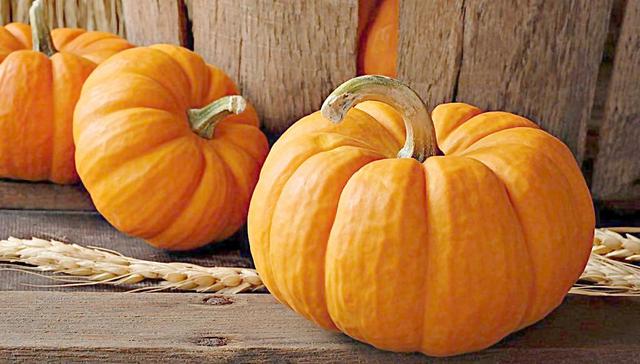
The first thing to understand, in fact, all foods have calories, pumpkin or, after eating will have an impact on blood sugar, just the speed of their elevation of blood glucose, if the more gentle words, the more favorable to diabetes or high blood sugar patients. Used to determine the speed of food glycemic is GI (glycemic index), GI value higher than 50 can be judged as a higher glycemic index of food, and pumpkin GI is 75, it can be said that for diabetic friends to eat too much pumpkin is certainly not good. However, the good thing is that the GL (glycemic load) of pumpkin is not too high, glycemic load can be regarded as the factor of sugar per unit area, if you do not consume in excess then the impact on blood sugar will not be too great, so pumpkin appropriate consumption of blood sugar will not be too great, remember to consume too much, surely the threat to the blood glucose is very big.
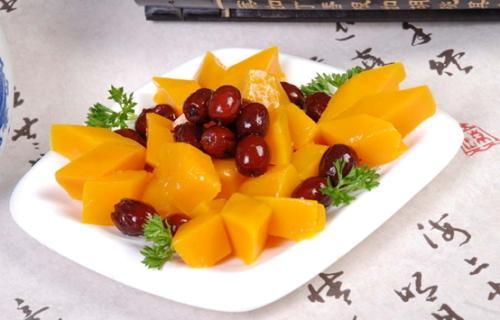
Modern medical research shows that pumpkin contains adenine, pentosan, mannitol and many other substances beneficial to the human body, and has the effect of promoting insulin secretion, which has a good effect on diabetic patients to improve their symptoms, in addition, pumpkin also contains pectin, cobalt, and other elements, which also assist in smoothing blood glucose, pumpkin polysaccharides extracted from pumpkin is the main hypoglycemic active ingredient of pumpkin, which can significantly reduce the model of diabetic mice blood glucose value, at the same time has a certain effect of lowering blood fat. So, in fact, eating pumpkin appropriately has an auxiliary function in smoothing blood sugar, in addition, it is not the pumpkin itself that can assist in lowering blood sugar, but rather its extract has a certain smoothing effect on blood sugar. So, be sure to understand that there is a misunderstanding.
Daily appropriate to eat some pumpkin not only has the effect of assisting in lowering sugar, but also can be supplemented with rich nutrients, due to pumpkin GL is low, diabetics can also be appropriate to eat some pumpkin, not more than 80g at a time, can be divided into more than a couple of times to eat, or try to choose to eat between two meals.
Do not play a big role. Pumpkin as a vegetable, vitamins minerals and other nutrients rich, but also high in carbohydrates, diabetics can be appropriate to eat, but too much diet will likewise cause an increase in blood sugar.
In recent years, pumpkin has been rendered into a "cure" for diabetes, "panacea", many older people believe, do not eat with pumpkin instead of meals, resulting in malnutrition, blood sugar levels have been high. In fact, it is to enter a cognitive and health management of the misunderstanding.
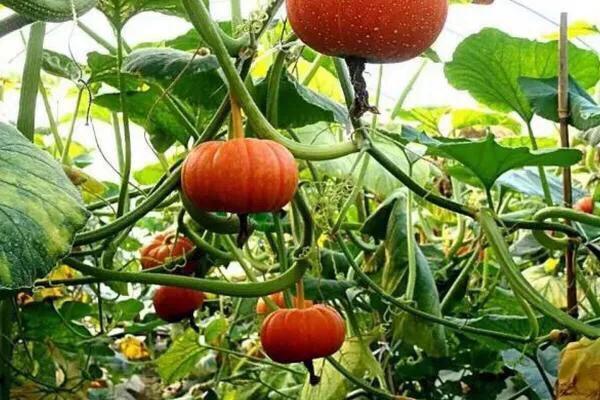
Now the market seems to "comply with public opinion", some manufacturers produce pumpkin powder and other publicity can lower blood sugar, so that some older people with diabetes see the "hope", throw away the drugs with pumpkin, pumpkin powder, etc. instead of "cure"! ". Once saw a TV report, an old man to control blood sugar, do not take medication every day to eat pumpkin, a month later, not only aggravated, but also the whole body yellow skin, the doctor instructed him to stop eating pumpkin and switch to medication before getting better. This is because the pumpkin is rich in a large number of carotene, dietary excess will accumulate in the body and "yellow skin".

An example:
My mother-in-law for diabetes for many years, a few years ago is to listen to others say that eating pumpkin can improve the diabetic body, once a day there must be a meal with pumpkin instead of staple food, while stopping the medication, the results of a stage of the blood glucose all the way to the skyrocket, which is only from the "legend" in the sober, "Emergency brakes! "began to consciously follow the doctor's instructions to use medication. Later, after the double treatment of medication and diet control and regulation, the condition of the party gradually improved.
Pumpkin, it is indeed quite high nutritional value, but to correctly recognize its nutritional rather than medicinal value, diabetics can eat some appropriate to the body has certain benefits, but must not be treated as a "drug" so as not to miss the condition. A home truth.
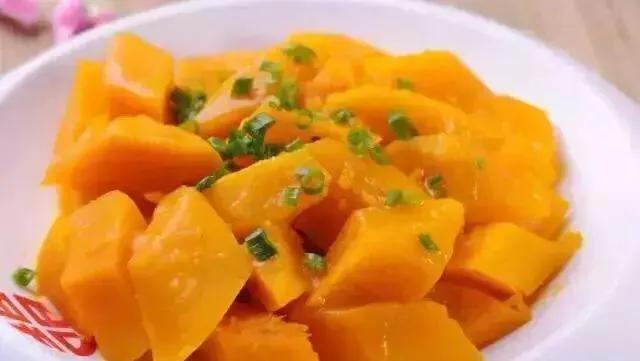
Image Source Web.
This question and answer are from the site users, does not represent the position of the site, such as infringement, please contact the administrator to delete.